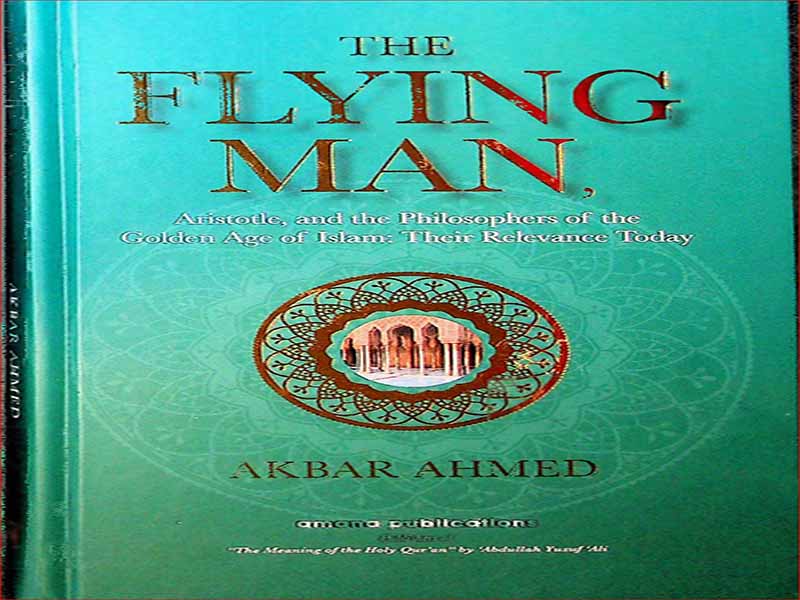- عنوان کتاب: The Flying Man – Aristotle and the philosophers of the Golden Age of Islam
- نویسنده: Akbar Ahmed
- حوزه: فلاسفه عصر اسلام
- سال انتشار: 2021
- تعداد صفحه: 130
- زبان اصلی: انگلیسی
- نوع فایل: pdf
- حجم فایل: 6.30 مگابایت
مردی که در حالتی خلق شده است که خود را در هوا معلق می بیند، چشمانش را بسته است و دستانش را محکم دراز می کند به طوری که نمی تواند چیزی را لمس کند یا بدنش را احساس کند. اگرچه او نمی دانست که بدن دارد، اما همچنان از وجود «خود» یا «روح» خود آگاه بود. بنابراین روح هم از بدن متمایز است و هم چیزی فراتر از بدن. این نتیجه ای بود که ابن سینا، فیلسوف ایرانی که در قرن دهم و یازدهم می زیست، در «آزمایش فکری» خود که به عنوان مرد پرنده یا مرد شناور شناخته شد، به دست آورد. (برای اهداف این تحقیق از نامهای رایج جهانی فیلسوفان بزرگ گذشته استفاده میکنیم، به عنوان مثال، ابن سینا برای ابوعیت الحسین بن عبدالله بن سطنا یا ابن سینا و آوکروس برای ابوالعالی. -والتد محمد بن احمد بن محمد بن رشد، یا ابن رشد). اگرچه مرد پرنده ابن سینا یکی از چشمگیرترین تصاویر و آزمایشات در تاریخ فلسفه است، اما همه با استناد به فقدان شواهد معتبر در مورد اعتبار این تز قانع نیستند. به دلایل مشابه، برخی در مورد تمثیل غار افلاطون و نظریه ابرمرد نیچه تردید دارند. ما بهعنوان محقق، در نمونههای دانشمندانی مانند ابن سینا، غزالی، افلاطون، و نیچه، علیرغم پیشینههای فرهنگی متفاوت و زمانهایی که در آن زندگی میکردند، پژواک را بهطور هدفمند مشاهده میکنیم. آنها جستجوی انسان برای حقیقت و نور، میل به تشویق و تعالی سرنوشت انسان را بیان می کنند و اهمیت دانش و یادگیری را به ما یادآوری می کنند، حتی اگر برخی از این ایده ها به طور غیر مستقیم بیان شوند.
maginc a man created in a state where he finds himself suspended in mid-air, eyes blindfolded and his hands stretched out tightly so that he cannot touch anything or feel his body. Although he would not know he had a body, he would still be aware of the existence of his “self” or “soul.” The soul is therefore both distinct from and something more than the body. This was the conclusion arrived al by Avicenna, the Persian philosopher who lived in the tenth and eleventh centuries, in his “thought-experiment” which has come to be known as the Flying Man or Floating Man. (For the purposes of this study we will be using the globally popular names of the great philosophers of the past, for examples, Avicenna for Abu ‘AIT al-Husayn ibn ‘Abd Allah ibn STna, or Ibn Sina, and Avcrroes for Abu al-WalTd Muhammad ibn Ahmad ibn Muhammad ibn Rushd, or Ibn Rushd). Although Avicenna’s Flying Man is one of the most striking images and experiments in the history of philosophy, not everyone is convinced about the validity of the thesis, citing a lack of credible evidence. For similar reasons, some have doubts about Plato’s allegory of the cave and Nietzsche’s theory of the superman. As scholars, we note the echo in purpose in the examples of scholars like Avicenna, Al-Ghazali, Plato, and Nietzsche despite their differing cultural backgrounds and the times in which they were living. They arc expressing the human search for truth and light, the desire to encourage and elevate the destiny of man, and they remind us of the importance of knowledge and learning, even if some of these ideas arc indirectly expressed.
این کتاب را میتوانید بصورت رایگان از لینک زیر دانلود نمایید.
Download: The Flying Man – Aristotle and the philosophers of the Golden Age of Islam




































نظرات کاربران